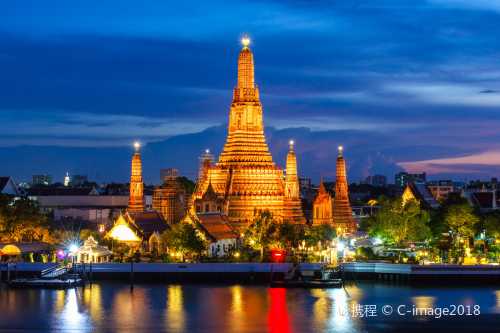Popular Trip Moments
Embassy Room Breakfast | Living Room Park Hyatt | Embassy Room | 🚶♀️Walk along the Song Wat tourist street | 🚶♀️Walking around Talad Noi | Savor the Bold Flavors of Traditional Kaprao | Park Hyatt Bangkok Premier Room | Penthouse Bar at Park Hyatt Bangkok | Park Hyatt Bangkok | Pay homage to Luang Por Dam at Wat Chang Lek | Open House Central Embassy | Wat Chao Am: A Temple Built by King Taksin | Visit the temple and admire the murals from the reigns of King Rama V and King Rama VI. | Worship Luang Por Phet and Luang Por Sukhothai | [Bangkok] Turkish Sand Coffee☕ | Emily’s Shredded Chicken Noodles | แนะนำ book cafe บรรยากาศดีย่านเสนานิคม 1 | Songkran Sanam Luang is very impressive. | Theatre Cafe restaurant | Hidden Leaf Matcha opens during Songkran | Back to Anantara ~ A riverside paradise not to be missed in Bangkok! | Bangkok 7-day in-depth tour, explore the city's multifaceted charm | Bangkok 2-day 1-night tour, experience passion and mystery | Khiri Thai Tea in Bangkok Chinatown | Preme Spa - One of the Best Hidden Spa | Bangkok's Chim Chim Bangkok | Gorgeous Wooden House Cafe - Fran’s Sukhumvit 49 | Roll into Rolling Roasters on Ekamai Road | Things to do in One Bangkok | First in Southeast Asia: Le Café Louis Vuitton - Bangkok
Popular Travel Types
Trending Travelogues
Recommended Attractions at Popular Destinations
Bangkok attraction near me | Manila attraction near me | Tokyo attraction near me | Taipei attraction near me | Hong Kong attraction near me | Seoul attraction near me | Kuala Lumpur attraction near me | Los Angeles attraction near me | Shanghai attraction near me | New York attraction near me | Shenzhen attraction near me | Osaka attraction near me | Singapore attraction near me | London attraction near me | Guangzhou attraction near me | San Francisco attraction near me | Beijing attraction near me | Macau attraction near me | Bali attraction near me | Jakarta attraction near me | Paris attraction near me | Ho Chi Minh City attraction near me | Istanbul attraction near me | Phuket attraction near me | Chicago attraction near me | Seattle attraction near me | Toronto attraction near me | Orlando attraction near me | Cebu attraction near me | Chiang Mai attraction near me
Popular Restaurants in Bangkok
Sra Bua by Kiin Kiin | MEZZALUNA | NAHM | Red sky | MOON BAR | Paste Bangkok | Le Normandie | The House of Smooth Curry | The Local | Saneh Jaan | Supanniga Eating Room Thonglor | Gaa | Elements, inspired by Ciel Bleu | The Kitchen Table | Breeze | RAIN TREE CAFÉ | NAN BEI | Biscotti | NEXT2 Café | Above Eleven | Paii | El Gaucho Argentinian Steakhouse(Sukhumvit Soi 19) | Sorn | The Dining Room at Grand Hyatt Erawan Bangkok | Chim By Siam Wisdom | Cocotte Farm Roast & Winery | Patara Fine Thai Cuisine | Supanniga Eating Room, Sathorn 10 | Shang Palace | Thipsamai
Popular Ranked Lists
Popular Best Things to Do in Xing'an County | Popular Premium Hotels in Grad Korcula | Popular Premium Hotels in Saikai | Popular Best Things to Do in Pingxiang | Top 3 Best Things to Do in Bazhong | Popular Luxury Hotels Near Grad Korcula | Popular Best Things to Do in Heze | Top 4 Best Things to Do in Guigang | Top 6 Local Restaurants in Batam | Top 6 Local Restaurants in Pingxiang | Top 10 Local Restaurants in Dongtai | Popular Premium Hotels in Oberammergau | Top 18 Local Restaurants in Jingdezhen | Top 9 Local Restaurants in Mandalay | Popular Premium Hotels in Miches | Popular Premium Hotels in Torquay | Top 16 Local Restaurants in Glasgow | Popular Best Things to Do in Jurong | Popular Local Restaurants in Baise | Top 10 Local Restaurants in Riyadh | Top 10 Local Restaurants in Youyang County | Top 15 Local Restaurants in Tai'an | Popular Premium Hotels in Mobile County | Popular Luxury Hotels Near Maggona | Top 3 Best Things to Do in Fuzhou | Popular Best Things to Do in Neijiang | Popular Premium Hotels in Phuc Yen | Top 4 Best Things to Do in Nanping | Popular Premium Hotels in Mayminsky District | Popular Best Things to Do in Loudi
Payment Methods
Our Partners
Copyright © 2025 Trip.com Travel Singapore Pte. Ltd. All rights reserved
Site Operator: Trip.com Travel Singapore Pte. Ltd.
Site Operator: Trip.com Travel Singapore Pte. Ltd.
































